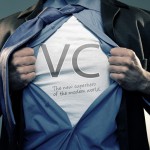16 TECH TRENDS THE BIG VCU0026#X27;S ARE WATCHING
January 27, 2015
 The founders of the venture capital firm Andreessen Horowitz have invested successfully in just about every significant startup you can think of. And when they talk, I listen. Now they have put up a list of 16 major tech trends they are watching, or as they say:
The founders of the venture capital firm Andreessen Horowitz have invested successfully in just about every significant startup you can think of. And when they talk, I listen. Now they have put up a list of 16 major tech trends they are watching, or as they say:
We don’t invest in themes; we invest in special founders with breakthrough ideas. Which means we don’t make investments based on a pre-existing thesis about a category.
Accompanying the list are insightful descriptions of the opportunities in each category. In this post I want to highlight a few of these insights by making a selection out of their descriptions. more–>But first, here’s the list
Sensorfication of the enterprise:
“The form and sophisticated functionality of smartphones has led to businesses we couldn’t ever have imagined (ridesharing, to name just one example). This was made possible partly because of the “sensorification” of the landscape, coupled with mobile and a friendly UI.
That same sensorification needs to move into the enterprise.
So where do the sensors come in? Think about what happened on mobile. We don’t have a lot of screen real estate or functionality available there; the sensors are essentially used as “shortcuts” to information and actions the user doesn’t have to perform. Instead of having to manually type location in to our phones every time, GPS simply informs our phones that ‘you are here’ so it can automatically load that context.
For enterprise, the value of the sensors is in being a shortcut for the user interface, potentially even replacing typing so we can concentrate on the easy, fun, creative things.”
Machine Learning + Big Data
“Machine learning is to big data as human learning is to life experience: We interpolate and extrapolate from past experiences to deal with unfamiliar situations. Machine learning with big data will duplicate this behavior, at massive scales.
The key here is in more automated apps where big data drives what the application does, and with no user intervention. The more real-time and granular we can get, the more responsive, and more competitive, we can be.
Compare this to the old world of “small-data” business intelligence, where it was sufficient to have a small application engine that sat on top of a database. Now, we’re processing a thousand times more data, so to keep up the speed at that scale, we need a data engine that’s in-memory and parallel. And for big data to unlock the value of machine learning, we’re deploying it at the application layer. Which means “big data” needs “big compute”.”
The Containerization of Code
“Containers are another way of isolating an application from the underlying hardware. They’re objects that serve the same purpose as a virtual machine — instantiations or clones of the host operating system with a self-standing, self-executing application inside — but they also provide bare-metal performance, because there’s no virtualization layer between.
For me, the next step in containerization is treating the datacenter, with all its containers, like one giant computer or server. Many applications today are really just distributed systems: Applications aren’t necessarily confined to just one container. We might have an application that consists of ten containers running together. We could have 1,000 applications running across 10,000 containers. Or we might have a single big data job that involves multiple, interdependent applications.
So there needs to be a simple abstraction to run the operating environment and manage how all this stuff gets utilized for the right capacity, reliability, and performance (the key metrics by which a datacenter operates). And the key to that is comprehensive management of the entire operating environment. That’s what needs to happen.”
Bitcoin and Blockchain
“Bitcoin is as different from the wire transfer system as the modern Internet is from phone lines. You wouldn’t expect the phone lines of 1988 to easily accommodate hundreds of millions of tweets and likes per day, nor multi-gigabyte file transfers or P2P apps. Moreover, the primary use of Bitcoin may not be doing “better wire transfers” anymore than the primary use of the Internet was VOIP.
Instead we should expect totally new kinds of applications, because Bitcoin is good for transactions that are very small, very large, very fast, very international, and/or very automated — unlike the legacy payment rails. It probably starts with low stakes, digital goods that the dollar can’t colonize right now due to the requirements of credit card companies … basically business models that are just too low stakes, or too weird, or too international.”
Internet of Things
“We tend to focus on the glorified outcomes but the mundane ones are equally if not more powerful. Right now we have a culture of planned obsolescence. But the IoT could change things here, and create a new culture of repair. If you’re a small family-owned restaurant that can’t afford to constantly upgrade equipment or fix things, you can answer a whole new set of questions with the IoT: Is that freezer working extra hard because someone left the door open, or because its compressor is about to fail and you’re about to lose $6,000 in food? Power consumption patterns, audio waves, and more can be analyzed to determine whether, when, and how something ought to be running.
With the IoT we’re headed to a world where things aren’t liable to break catastrophically — or at least, we’ll have a hell of a heads’ up.”
Head over here, to check out all 16 trends.

 English | EN
English | EN 
